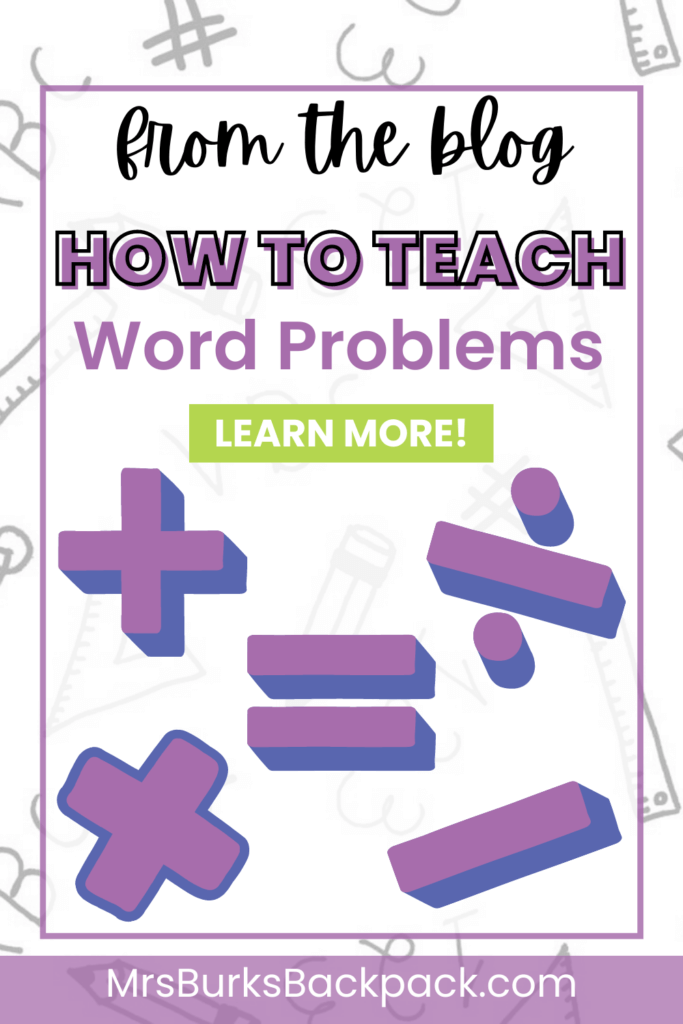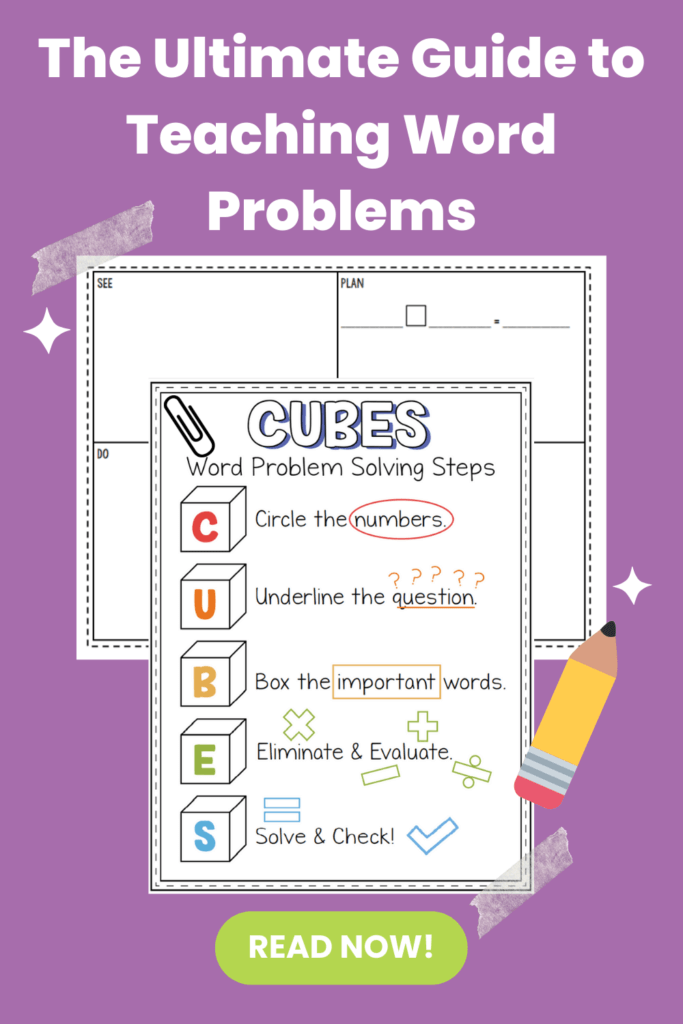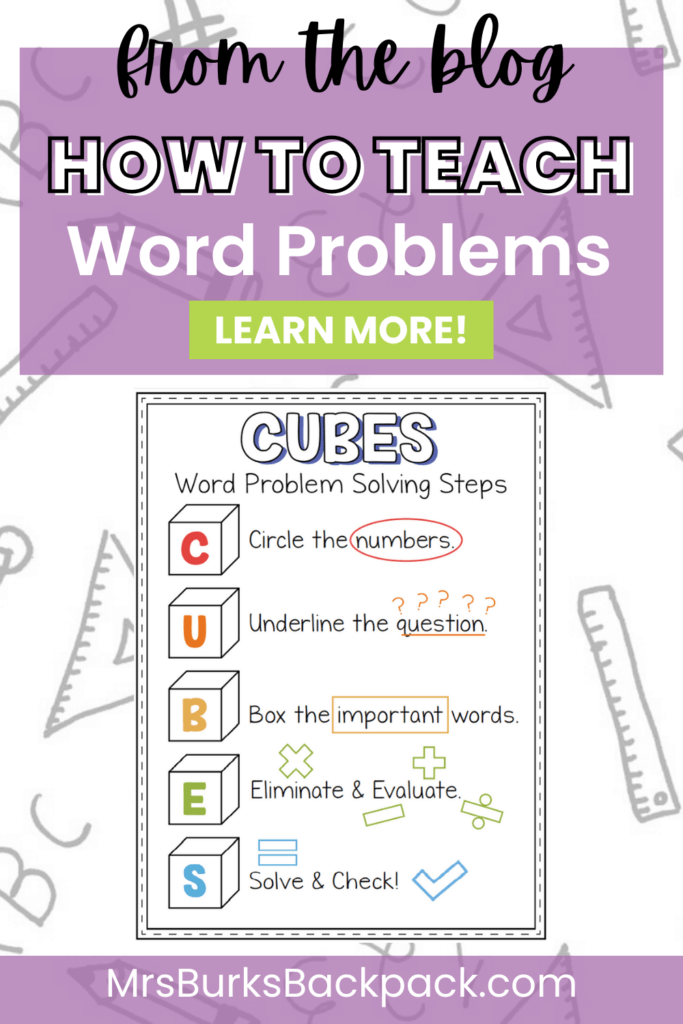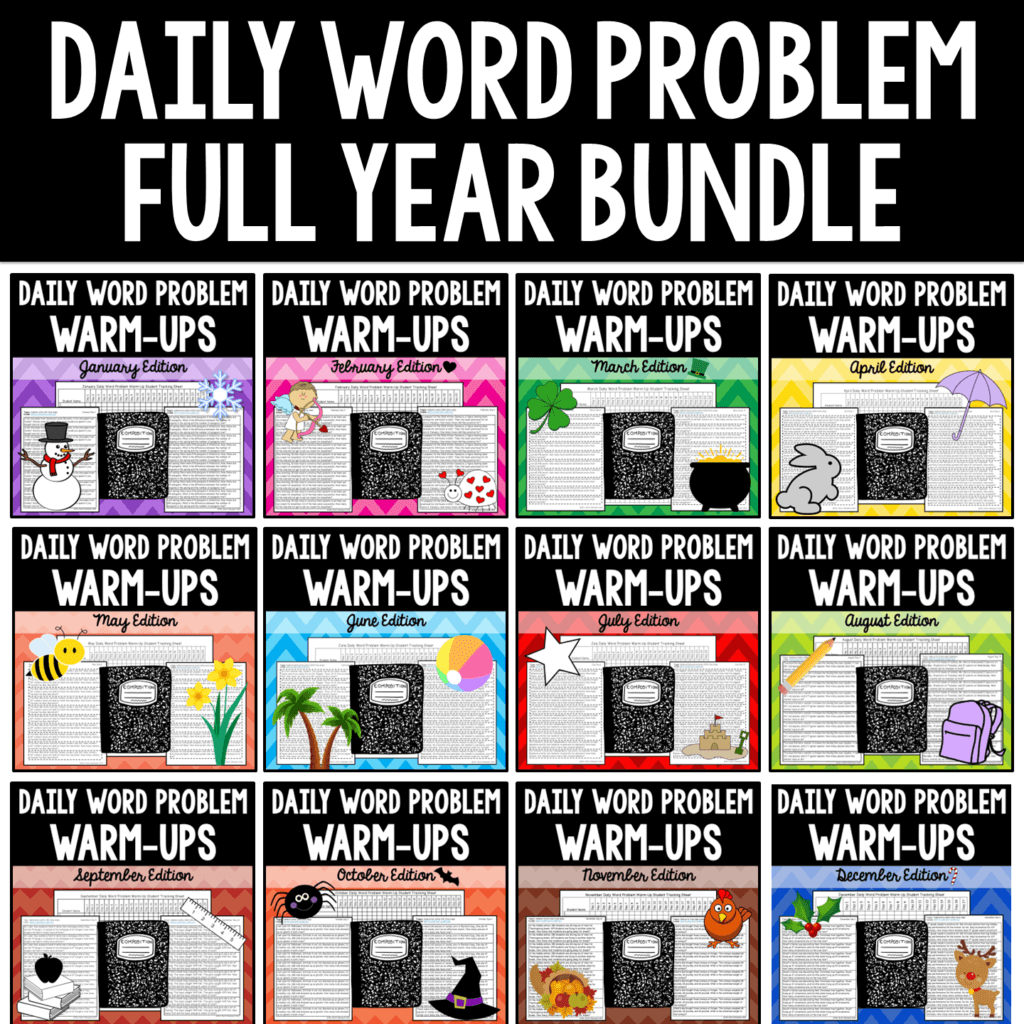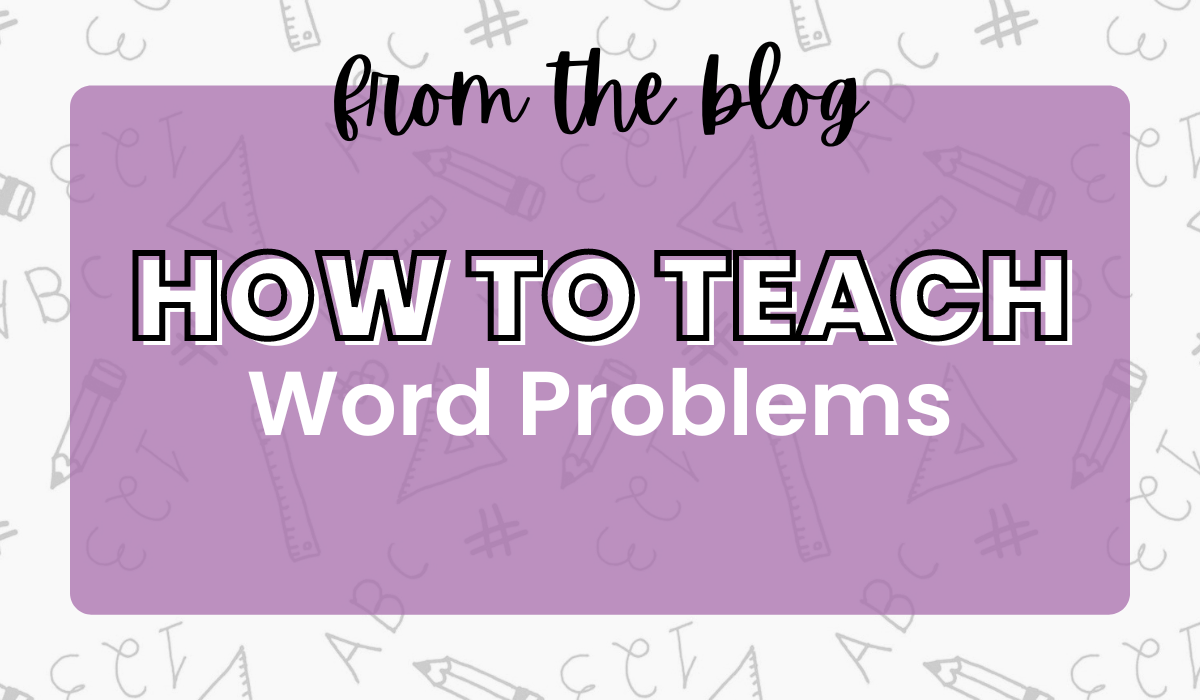
THE ULTIMATE GUIDE TO TEACHING MATH WORD PROBLEMS
What are the best tips, tricks, and advice for teaching math word problems to elementary school students? Word problems can be the trickiest thing to teach all year long, and they frequently give teachers trouble. So, where do you begin so that students don’t get overwhelmed or confused?
Select a Math Problem-Solving Strategy
First, students need to have a concrete, consistent plan of action in order to be able to solve word problems effectively. You have probably heard of these problem-solving strategies such as CUBES or See-Plan-Do-Reflect. You may choose to teach a variety of these strategies to your students, and then they can use whichever method works best for them. Be sure to model these methods for your students frequently to show your thought process out loud!
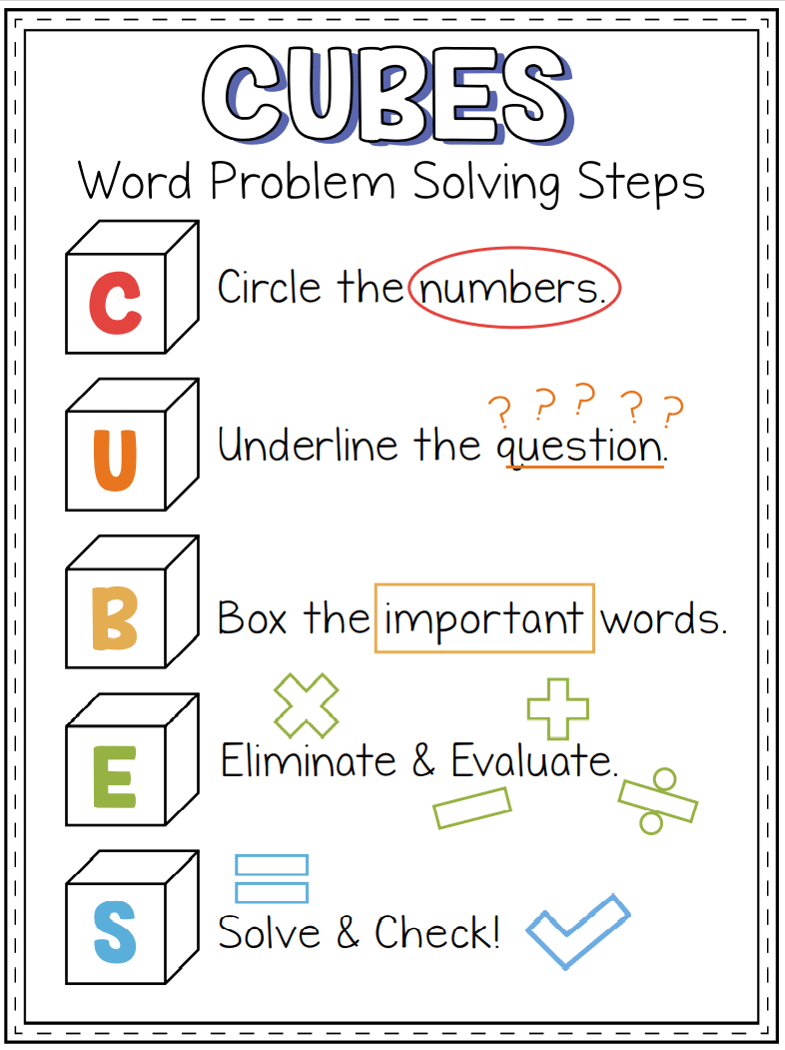
You can find these CUBES posters for FREE on my TPT store by clicking here.
Teaching with CUBES
CUBES is a popular math word problem-solving strategy that gives students an easy-to-remember acronym. It outlines the steps they need to take in order to solve any word problem.
Additionally, CUBES is a great way to break down a seemingly overwhelming word problem into steps that are easy to follow.
C – Circle the numbers. What do I know?
U – Underline the question. What am I being asked to solve?
B – Box the important words. Am I being asked to multiply, divide, add, or subtract? Note that this says IMPORTANT words and not key words – See my section about teaching key words below.
E – Eliminate & Evaluate. Eliminate any extra information. Evaluate what steps you need to take to solve the problem and make a plan.
S – Solve & Check. Solve the problem using your plan from the previous step. Make sure to show your work! Check your answer by solving the word problem in a different way. Write your answer sentence. Does your answer make sense?
Teaching See-Plan-Do-Reflect (SPDR)
The See-Plan-Do-Reflect math problem-solving method is a great way to teach students to slow down and approach the problem one step at a time. It encourages students to understand the problem, make a plan, solve the problem, and lastly check &reflect.
See – Write down the important information & numbers that you find in the word problem.
Plan – Write a number sentence to describe how you intend to solve the problem. (16 + 18 = ?)
Do – Solve the problem using a method of your choosing (standard algorithm, HTO chart, number line, tens frame, etc.)
Reflect – Think about your answer and ask yourself “Does my answer make sense?” Look back at your plan, and check to make sure that your answer matches your plan. Check your work in this step by solving the problem a different way.
By the way, I have a set of adorable See-Plan-Do-Reflect templates available on my TPT store. The product also includes other addition & subtraction tools/templates such as tens frames, number lines, HTO charts, and more!
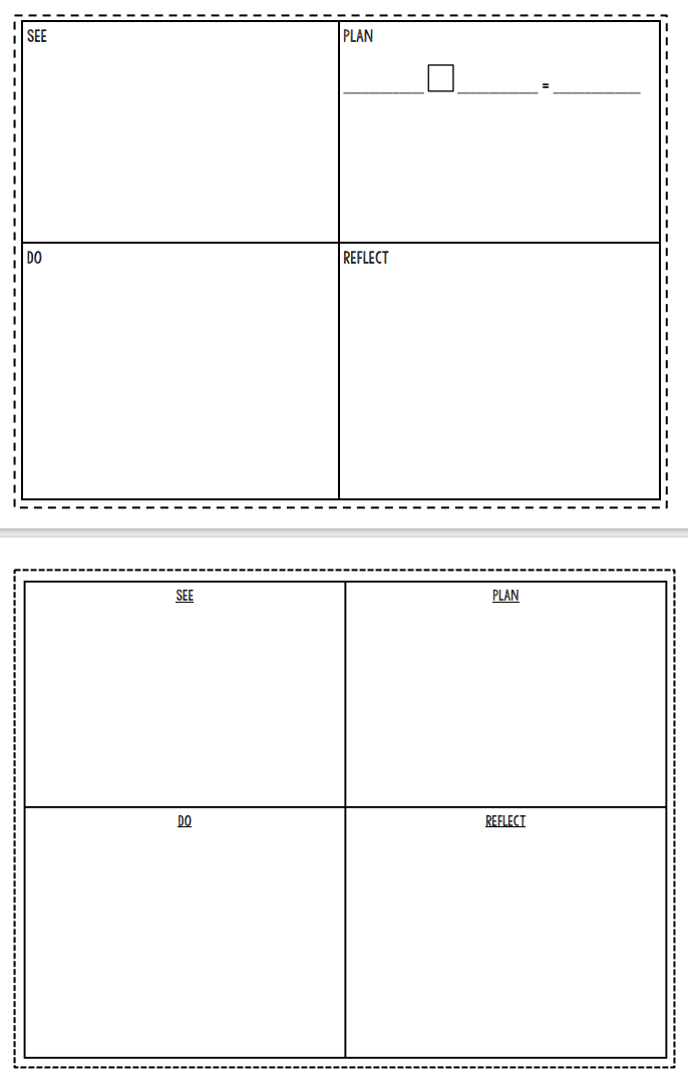
See-Plan-Do-Reflect templates, available for purchase from my TPT store here.
An Important Note About Teaching Math Key Words in Word Problems
Teaching math key words can give students a quick way to decide which operation to use to solve a word problem. However, use extreme caution with teaching these key words! Key words can be misleading – students may see a common “addition” key word in a word problem where they actually need to subtract.
This is why students need to be encouraged to think about word problems critically first and foremost – and not make quick snap decisions about what operation to use. They should be reflecting throughout the problem solving process to make sure their plan makes sense and that their answer makes sense as well (“What is happening in this problem?” / “Should my answer be greater or less than the numbers in the story?”)
Key words might help your students some of the time, but they may ultimately end up being a hinderance to your students’ critical thinking skills.
Teach Students to Visualize the Word Problems
The great thing about word problems is that you can think of them like a mini-story. This may be helpful for your students who are more visual learners.
Students can draw a picture to depict the problem. If your students are working with larger numbers, make sure they are not spending tons of time drawing 467 individual pieces of bubble gum. Teach and model for your students how to represent all 467 of those pieces in a way that takes less time.
When you are teaching the whole group or in small groups, you can even have students act out the word problem like a small play! Choose students to play the “roles” of the characters in the problem, and then implement props. Acting out the problem in this way can help students to figure out what operation they need to use to solve the problem.
Practice Solving Word Problems Daily!
To be proficient at solving word problems, students need daily repeated exposure and practice. My favorite way to do this is to start our math block each day with a Word Problem Warm-Up.
Daily Math Word Problem Warm-Ups are a quick, easy way to provide students with plenty of practice solving word problems. It also serves as a quick way for you to monitor which students are mastering the skill, and which students need additional tutoring and practice.
You can find a bundle of daily word problem warm-ups available for purchase from my TPT store HERE. The bundle includes many different variations of addition & subtraction word problems and the problems are themed for every month of the year. You will never run out of word problems to solve each day!

If you’d like to try my daily word problem warm-ups for FREE, fill out the form below to join my email list and I’ll send you a sample as a thank-you!
Final Thoughts on Teaching Word Problems
Remember that above all else, do what works best for your students! Learning is never “one size fits all”, and word problems are no different. Students need plenty of repeated exposure to word problems to build a strong foundation. With consistent practice, your class will be solving word problems like pros!
If you’d like to save these ideas about how to teach word problems for later, pin the images below!
